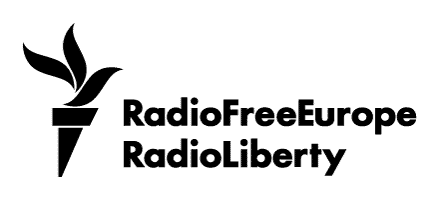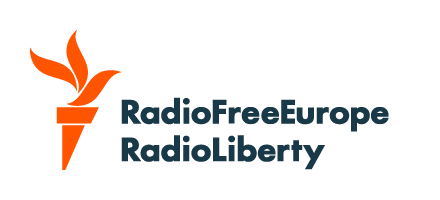On October 3, Russia unleashed its biggest-ever attack on Ukraine’s natural gas sector. A week later, a drone and missile barrage knocked power out across a large swath of Kyiv and prompted emergency blackouts in nine regions nationwide.
Over the past three winters, Ukrainians have braved frequent blackouts and heating cuts in freezing temperatures as Russia targeted energy facilities in a bid to batter the economy and demoralize the population.
Now, with more drones in its arsenal and advances in missile-targeting technology, Russia may be striving to make this winter the worst for Ukrainians since it launched the full-scale invasion in February 2022.
One ominous sign is a change in Moscow’s strategy: This year, it has made Ukrainian natural gas infrastructure a far more frequent target than it had in the past.
The October 3 attack that hit assets of state-owned Naftogaz in the Kharkiv and Poltava regions was the largest strike on gas facilities to date, the company’s CEO said. It came weeks before the heating season begins later this month.
“It was yet another display of Russian malice, aimed solely at disrupting the heating season and depriving Ukrainians of the ability to heat their homes this winter, " Serhiy Koretskiy said in a statement. The attack damaged “a significant portion of our facilities,” he said, adding, “Some of the destruction is critical.”
Naftogaz produced 13.9 billion cubic meters (bcm) of natural gas last year, accounting for almost three-quarters of total Ukrainian output. Russia followed the October strike with additional attacks on Naftogaz facilities on October 5, then hit a major power plant two days later.
Power And Gas
In the first three years of the war, Russia concentrated on crippling Ukraine's electric power grid. But since the contract to ship Russian gas to Europe via Ukrainian pipelines ended on January 1, Moscow has turned its attention to Ukraine's gas production and storage capabilities.
Naftogaz infrastructure has been struck more than 100 times in at least 11 separate air assaults in 2025. Those attacks account for half of all strikes on the company since the full-scale invasion began in 2022.
Meanwhile, the Ukrainian power sector, which suffered 13 massive attacks in 2024 that knocked out 9 gigawatts of power generation capacity -- the equivalent of half of peak winter demand -- is still very much on the Kremlin’s radar.
Overnight strikes on October 9-10 severely damaged equipment at thermal power stations belonging to DTEK, Ukraine’s largest private energy company, and marked the third time its facilities were attacked in a week, the company said. It said its thermal power stations have been attacked more than 200 times since the start of the full-scale invasion.
The October 10 strikes on Kyiv notwithstanding, Moscow has recently been targeting mainly energy facilities in regions closer to Russia, such as the border regions of Sumy and Kharkiv in the northeast.
Mounting Damage, Growing Threats
A December 2024 World Bank assessment said Ukraine's energy sector had suffered $20.5 billion in damage at that point. The threat has intensified dramatically this year as Moscow ramps up drone production.
Russia launched more than 5,600 one-way attack drones last month compared with 1,400 in September 2024, a fourfold increase. The percentage of Russian drones successfully hitting targets has increased as well, from the low single digits last year to the mid-teens.
President Volodymyr Zelenskyy has pleaded for more air defense systems from Western partners to help protect its cities and critical infrastructure. He said on October 10 that 203 energy facilities need air-defense protection.
Energy-sector strikes have plunged Ukrainians into rolling blackouts that disrupt heat, water, transport as well as health care and schooling. Experts say they disproportionately affect the most vulnerable groups: older adults; women; low-income families with small children; and the millions of internally displaced people.
Next Year's Crisis?
After three winters of war, many Ukrainians say they are ready for potential power problems in the coming months.
“We’re not making any special preparations now because we already did that in the first winter of 2023,” Yulia, a network manager at a Kyiv bookstore chain, told RFE/RL’s Ukrainian Service. “We have a generator and [a power unit with] batteries installed.”
If attacks on gas infrastructure affect supplies of household gas, it could add to winter woes for people with gas stoves or water heaters.
So far, though, the energy sector has held up better than expected.
Kharchenko said he thinks Ukraine will get through the winter without a major crisis, adding the country has sufficient natural gas in storage. But next year could be far worse due to a cash crunch.
Russia has this year destroyed possibly dozens of booster compressors needed to transport natural gas. The equipment -- which can take months to deliver -- costs anywhere between $2 million to $8 million, Kharchenko said.
Naftogaz, which has already borrowed extensively from Western institutions to buy natural gas to cover Ukraine’s import needs, will be stretched financially, especially if Russia continues to target its infrastructure.
"Gas for heating shouldn't be a problem this year, but what will happen next year? Naftogaz has spent a lot of money on buying gas and it may not have the money to buy equipment to restore production as well as to build defense structures to guard gas production," Kharchenko told RFE/RL.
Scrambling for Support
Last year, Ukraine produced 19 bcm of natural gas and consumed about 22 bcm amid a mild winter. Demand this winter could be higher if temperatures are colder, and the latest attacks have clouded this year’s production figure.
Following a February attack that briefly knocked out as much as 40 percent of natural gas production, Ukraine said it planned to import 4.6 bcm this year to cover its needs.
The October 3 attack was even larger by sheer number of drones and missiles. Naftogaz has not said how much production was lost, but Bloomberg News, citing unnamed sources, reported on October 9 that recent strikes knocked out more than half of Ukraine's production.
Energy Minister Svitlana Hrynchuk said on October 7 that Ukraine is now considering hiking imports this year by nearly a third over the already increased figure. That would mean a total of almost 6 bcm.
"It will all depend on how quickly we can restore things. The sooner we manage to put facilities back into operation, the less gas we'll need to import," she said.
About half the damage to gas infrastructure can probably be repaired quickly, but the other half “could take months,” Kharchenko said.
Hrynchuk said she is in discussions with European officials about importing more gas, including potential financing.














